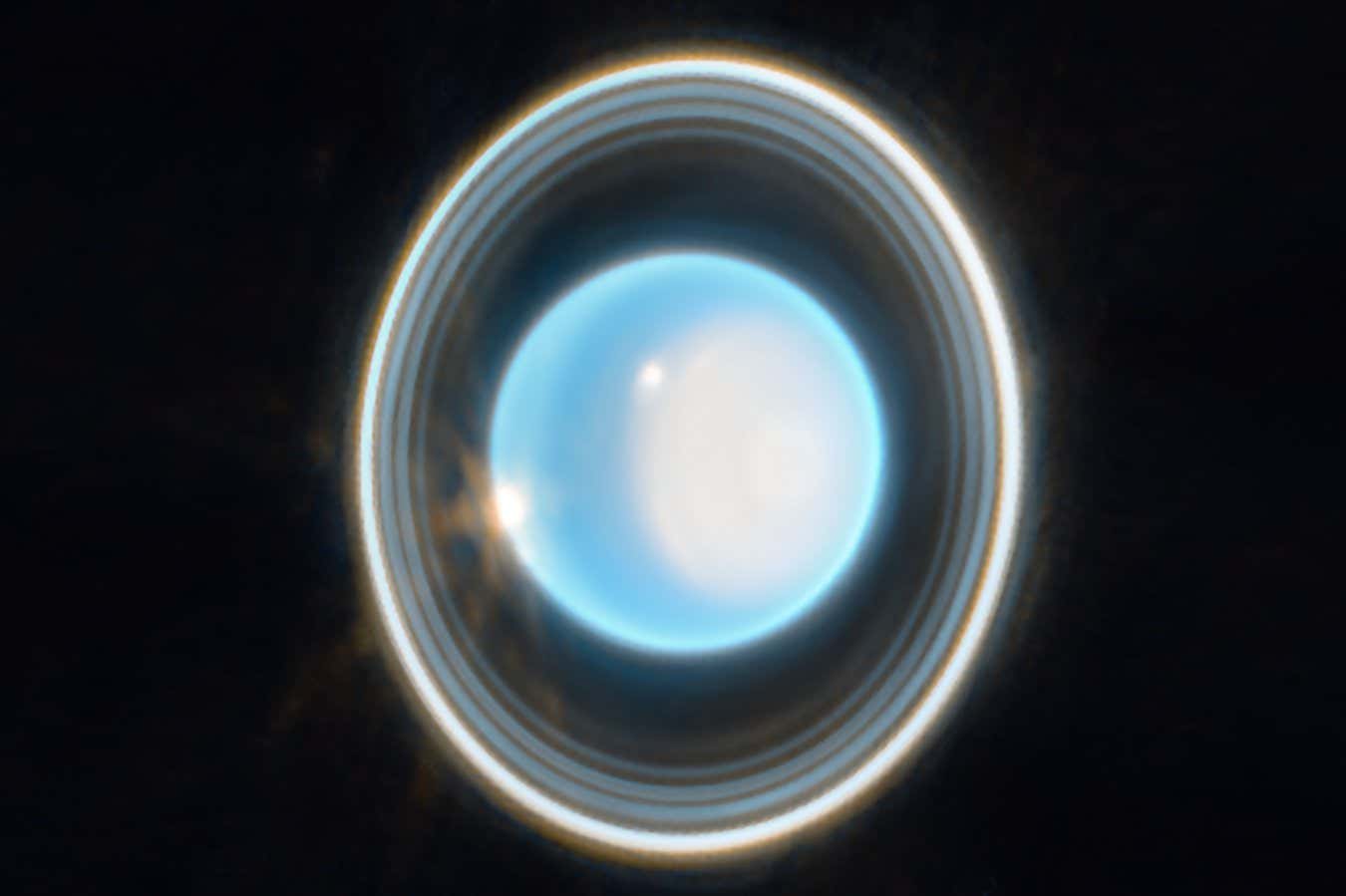We only have a few images of the rings around Uranus, but now the James Webb Space Telescope has captured a startling view
By Alex Wilkins
6 April 2023
Uranus as seen by the James Webb Space Telescope
NASA, ESA, CSA, STScI/J. DePasquale (STScI)
Uranus and its dusty rings have been captured by the James Webb Space Telescope (JWST) in exquisite detail, along with clouds and a polar cap.
The rings around Uranus are difficult to see with most telescopes because the dark rocks and dust that form them reflect little of the sun’s light. Only two telescopes have imaged the rings directly, one aboard the Voyager 2 spacecraft during a flyby in 1986 and the Earth-based Keck Observatory in Hawaii.
But JWST’s infrared sensors, which captured Uranus in two separate wavelengths, are sensitive enough to pick them up. In all, 11 rings are visible in this image – another two known rings further out were too faint to show up.
Advertisement
The JWST is currently taking more detailed follow-ups, in which astronomers hope to see even more atmospheric features and the planet’s final two rings.
Read more:
The biggest moons of Uranus may have oceans beneath their icy shells
Imaging Uranus in the infrared also shows parts of its surface and tumultuous atmosphere that couldn’t be seen previously, like a large, bright patch at the centre of the planet’s north polar cap, which is visible when it points towards the sun in Uranus’s summer and is right of centre in this image, as well as a cloud towards the edge of the cap and another towards the left of the planet, linked to violent storms in its atmosphere.
